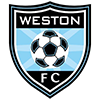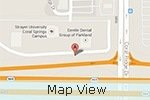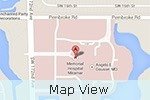Meniscus Tear
Meniscus tear is the most common knee injury in athletes, especially those involved in contact sports. A sudden bend or twist in your knee cause the meniscus to tear. This is a traumatic meniscus tear. Elderly people are more prone to degenerative meniscal tears as the cartilage wears out and weakens with age. The two wedge-shape cartilage pieces present between the thighbone and the shinbone are called meniscus. They stabilize the knee joint and act as “shock absorbers”.
Torn meniscus causes pain, swelling, stiffness, catching or locking sensation in your knee making you unable to move your knee through its complete range of motion. Your orthopedic surgeon will examine your knee, evaluate your symptoms, and medical history before suggesting a treatment plan. The treatment depends on the type, size and location of tear as well your age and activity level. If the tear is small with damage in only the outer edge of the meniscus, nonsurgical treatment may be sufficient. However, if the symptoms do not resolve with nonsurgical treatment, surgical treatment may be recommended.
Surgical Treatment
Knee arthroscopy is the commonly recommended surgical procedure for meniscal tears. The surgical treatment options include meniscus removal (meniscectomy), meniscus repair, and meniscus replacement. Surgery can be performed using arthroscopy where a tiny camera will be inserted through a tiny incision which enables the surgeon to view inside of your knee on a large screen and through other tiny incisions, surgery will be performed. During meniscectomy, small instruments called shavers or scissors may be used to remove the torn meniscus. In arthroscopic meniscus repair the torn meniscus will be pinned or sutured depending on the extent of tear.
Meniscus replacement or transplantation involves replacement of a torn cartilage with the cartilage obtained from a donor or a cultured patch obtained from laboratory. It is considered as a treatment option to relieve knee pain in patients who have undergone meniscectomy.
-
Personalized Physical Therapy Puts Bryant Back on the Court
Bryant could hear the whistles blowing as he walked by the gymnasium.
View more -
No off-season for sports injuries
As a new season of school sports and youth leagues gets underway,
View more -
Student Athletes Benefit from Individualized Treatment at U18 Sports Medicine
Becoming involved in a sport is one of the healthiest things that a child can do.
View more -
For young athletes, injuries need special care
More programs are using procedures and surgical techniques tailored for kids.
View more -
Dr Frank u18 Tip 1
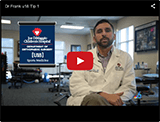 View more
View more -
Segment U18 Tip with Dr Frank 1
 View more
View more -
Dr. Frank’s 2010 WQAM high school football game halftime interviews
View more

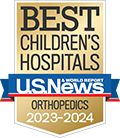


 Menu
Menu






 In The News
In The News Hollywood Office
Hollywood Office

![[U18] Sports Medicine](https://www.kidbones.net/wp-content/themes/ypo-theme/images/u18-sports-medicine-performing-arts-logo.png)
